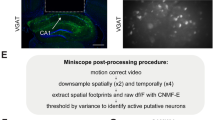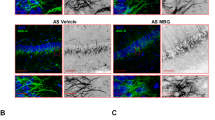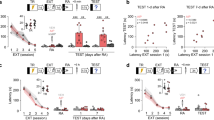Abstract
Kainic acid (KA) is well-known as an excitatory, neurotoxic substance. In mice, KA administered intracerebroventricularly (i.c.v.) lead to morphological damage of hippocampus expecially concentrated on the CA3 pyramidal neurons. In the present study, the possible role of γ-aminobutyric acid B (GABAB) receptors in hippocampal cell death induced by KA (0.1 µg) administered i.c.v. was examined. 5-Aminovaleric acid (5-AV; GABAB receptors antagonist, 20 µg) reduced KA-induced CA3 pyramidal cell death. KA increased the phosphorylated extracellular signal-regulated kinase (p-ERK) and Ca2+ /calmodulin-dependent protein kinase II (p-CaMK II) immunoreactivities (IRs) 30 min after KA treatment, and c-Fos, c-Jun IR 2 h, and glial fibrillary acidic protein (GFAP), complement receptor type 3 (OX-42) IR 1 day in hippocampal area in KA-injected mice. 5-AV attenuated KA-induced p-CaMK II, GFAP and OX-42 IR in the hippocampal CA3 region. These results suggest that p-CaMK II may play as an important regulator on hippocampal cell death induced by KA administered i.c.v. in mice. Activated astrocytes, which was presented by GFAP IR, and activated microglia, which was presented by the OX-42 IR, may be a good indicator for measuring the cell death in hippocampal regions by KA excitotoxicity. Furthermore, it showed that GABAB receptors appear to be involved in hippocampal CA3 pyramidal cell death induced by KA administered i.c.v. in mice.
Similar content being viewed by others
Article PDF
Author information
Authors and Affiliations
Rights and permissions
This is an Open Access article distributed under the terms of the Creative Commons Attribution Non-Commercial License (http://creativecommons.org/licenses/by-nc/3.0/) which permits unrestricted non-commercial use, distribution, and reproduction in any medium, provided the original work is properly cited.
About this article
Cite this article
Lee, HK., Seo, YJ., Choi, SS. et al. Role of γ-aminobutyric acid B (GABAB) receptors in the regulation of kainic acid-induced cell death in mouse hippocampus. Exp Mol Med 37, 533–545 (2005). https://doi.org/10.1038/emm.2005.66
Published:
Issue date:
DOI: https://doi.org/10.1038/emm.2005.66



